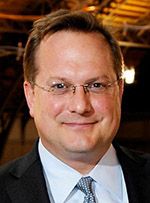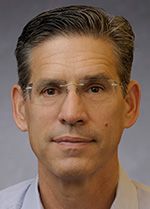Emerging Biotech: Innovation, Location, and Inspiration
Examining the rise and reach of biopharma in the key Northeast Corridor clusters of Boston, Philadelphia, and New Jersey.
Examining the rise and reach of biopharma in the Northeast Corridor
What does biopharmaceutical innovation look like in the Northeast Corridor? For regions such as Boston, New York, Philadelphia, and New Jersey, the unique history, culture, academia, science, and money all play their part in the corridor’s biopharma evolution.
During the interviews conducted for this article, it was remarked more than once that “biotechnology” isn’t what the company is anymore; it is the business model-what it is before it pivots to commercialization. While the history of pharma and biotech are separate paths, with the known delineation of small molecule vs. biologic, those lines are quickly blurring in the world of genomics, personalized medicine, and rapidly evolving areas of scientific and medical discoveries, including gene therapy, cell therapy, and gene editing. Many large pharma now have a presence in innovation centers in Boston/Cambridge, along with their historically biologic brethren. Philadelphia, which saw century-old traditional chemical companies such as DuPont evolve into big pharma, which then morphed again through acquisitions and consolidations, is now seeing a rejuvenation from the cell-based research of University of Pennsylvania (UofP) and Children’s Hospital of Philadelphia (CHOP) of the past 30 years come to fruition. And New Jersey, with its traditional pharma presence, has seen a revolving door of leavers replaced with comers bringing new biopharmaceutical life back to the state.
Boston
Kevin Slatkavitz, president and founder of Boston-based consulting company ThinkQuality, LLC, and member of MassBio, says of understanding the roots of the current Boston and growing Massachussetts biotech scene: “It has very much been the perfect storm recently in terms of having all the right elements. Typically, you’d follow the science. But research universities like Harvard, the Massachusetts Institute of
Kevin Slatkavitz

Technology (MIT), and Tufts have been around forever. So have the major medical centers here. And the emergence and success of local companies like Genzyme, Millennium, and others are not new.”
The biotech boom in Boston has, more so, taken shape within the last five to 10 years, according to Slatkavitz. “MassBio has been key, as have investors like Third-Rock, Flagship, Polaris Partners, Atlas Venture, and others,” he says. “But I suspect that the other necessary ingredient was then-Gov. Deval Patrick’s 10-year, $1 billion investment in Massachusetts life sciences and the creation of the Massachusetts Life Sciences Center, with Gov. Charlie Baker’s recent legislation that continues that program another five years and about $500 million. Much like understanding many stories, this one is also about following the money. And all of this infrastructure collectively continues to be an amazing magnet for talent, companies, and serial entrepreneurs; success breeding success.”
Lonnie Moulder, CEO of oncology-focused biotech Tesaro, located in the Boston suburb of Waltham, chose Boston to start the company in 2010. Moulder says the decision to locate in the city was easy; he had already been in Lexington, MA, with another company, but says, “We chose Boston for the support and the talent. For our compelling business strategy, we needed access to the talent.
Lonnie Moulder

”
Similarly, Chris Garabedian, chairman and CEO of Xontogeny, stayed in the Cambridge area when he launched the company in June 2016. Garabedian previously served as president and CEO of Sarepta Therapeutics from 2011 to 2015.
Prior to Sarepta’s name change, which Garabedian initiated along with its move to Cambridge, the company was known as Avi, founded in Oregon and located in Bothell, WA. Garabedian needed to choose between Seattle and Cambridge for the new location and vision, and ultimately chose Cambridge/Boston because of the talent. He posted available jobs in both locations but said “nine out of 10 either indicated they would move to Boston or already were in Boston.”
Dr. Blaine McKee has been chief business officer for ImmunoGen, also in Waltham, for about two months. Like Garabedian, he comes to his new company with a wealth of experience specifically in medical devices, along with small and large biotech. McKee also is no stranger to Boston-he received his PhD in Organic Chemistry from MIT, and an MBA in Finance from the MIT Sloan School of Management.
McKee said that both the talent and potential opportunities in the Boston area are unparalleled in regard to the proximity to science, as well as the ability to partner with academia, medicine, and industry. However, he did note one challenge. “The job market for sciences is very intense and it’s very much in demand,” says McKee. “It’s quite important that you stand apart from other companies in order to attract and retain talent. It’s not always about the money; you can’t underestimate culture and the importance of a cutting-edge science.”
McKee says that the innovative science or breakthrough science is critical, but in the end, it is more important to bring that science forward to help people. “Financially, sure, it’s important, but what really
Blaine McKee

motivates them is the promise,” he says.
Besides government support, the venture capital climate in the Boston area cannot be underestimated, as 80% of all life sciences venture capital is currently funneled into the area. McKee noted that the venture capital of the mid-1990’s that made San Francisco the leader in biotech has now underscored Boston and Cambridge as the unambiguous leader.
Next page, Philadelphia ...
Philadelphia
If you traveled to the J.P. Morgan Healthcare Conference in San Francisco, CPhI in Philadelphia, or to BIO in Boston this year, you would have seen the marketing handiwork of Life Sciences PA in action. The Cellicon Valley campaign-including signs in the airport, billboards, and taxi mentions-builds on a strategic plan started in the early ’90s at UofP by then-head of Penn Medicine, Bill Kelley, that ultimately led to it becoming a leader in cell and gene therapy.
Chris Molineaux, president and CEO of Life Sciences PA, says the scientists hired into Penn 30 years ago and fanned out across the region, have turned the area into a veritable family tree of cell and gene therapy. This is evidenced by the FDA approvals in 2017 of Kymriah, the CAR-T therapy begun by Carl June at Penn and completed with Novartis, and Luxturna, a gene therapy for a genetic form of blindness started by
Chris Molineaux

Jean Bennett, Al Maguire, and Kathy High at CHOP and developed by Spark Therapeutics. Cellicon Valley built on these successes to influence biotech and life sciences development in the Philadelphia area.
Molineaux says the development work of these academics and industry has attracted contract research organizations (CROs) and contract manufacturing organizations (CMOs) into the area, including Absorption Systems, WuXi App Tec, and others, that has formed an ecosystem that has been quietly growing for the past decade. In addition, he noted there are more than 60 academic institution labs in Philadelphia focused specifically in cell and gene therapies. Moreover, 75% of the vectors being used in cell and immunotherapy research were identified at Penn. Broadly, $450 million is already invested in cell and gene therapy in the area, and each lab employs, on average, 13 researchers and technicians.
If success breeds success, then Spark may win the award for launching biopharma renewal in University City. Steve Rush, vice president of leasing for Brandywine Realty Trust in Philadelphia, said interest from startup biotechs has increased since Spark signed on to be a tenant in Brandywine’s Schuylkill Yards, a new 20-year, $3.5 billion mixed-use development on a 14-acre site in the midst of existing buildings and surface lots adjacent to 30th Street Station. That location is home to Amtrak and the regional SEPTA lines, NJ Transit, the subway, trolley, and four bus lines, as well as very close proximity to Drexel University, UofP, and CHOP.
John Furey, chief operating officer of Spark Therapeutics, says the company currently occupies space in three buildings in University City area. It will add additional space in that same area by the end of 2018. He said of the Philadelphia location: “All of the regional features of Boston equally apply here.”
Rush echoes similar sentiments. “There is a massive amount of young, talented, educated people in this area that become potential employees for these companies,” he says. “What is also of great benefit is the opportunity for corporate partnerships with the universities on technology, research, and student co-ops or internships.
This fall, Schuylkill Yards will open a public park called Drexel Square, which is located at the center of the development at 30th and Market Streets. The park will be flanked by retail shops and restaurants, and will be the home to hosted events. Besides the attractiveness of the park, Rush explains, “Philadelphia has put in various economic incentives for this location, which is in a Keystone Opportunity Zone, which abates taxes here for 10 years.”
An artist's rendering of Schuylkill Yards/courtesy of Brandywine Realty Trust

The near-west Philadelphia suburbs of Wayne, Pa., is home to Aevi Genomic Medicine, formerly known as Medgenics. Aevi is developing therapies for children and adults with pediatric onset life-altering diseases, including ADHD, Crohn’s, and autism. The drug candidates leverage an internal genomics platform and a collaboration with the Center for Applied Genomics (CAG) at CHOP.
Aevi President and CEO Mike Cola previously served as president of specialty pharmaceuticals at Shire, as well as senior positions in product development and commercialization at Astra Merck and AstraZeneca. Cola received his BA from Ursinus College and MS from Drexel. With his background, Cola has a unique understanding of the area’s biopharma history.
“Philadelphia is based in the chemical industry, which is very risk averse, which evolved into the small-molecule pharma companies, which is also conservative,” he says. “They were slow to move toward biologics, though they weren’t rolling in blockbusters. The revolution of biology-not that chemistry isn’t
Mike Cola

important-and the new era of gene therapy and research into the mechanism of action for underlying disease, traditional pharma didn’t have that infrastructure,” explains Cola. Prior to regional pharma downsizing, there were about 90,000 pharma employees within a 1.5-hour radius of Philadelphia. he notes, emphasizing that that talent base is largely still here.
Cola believes the city offers fertile ground to grow and nurture young and emerging biotech companies. “There is certainly room to bolster the growth of our industry in Philadelphia, primarily through increased alignment between several key players-the local and federal government and investors, to name a few. We have all the right ingredients in place within our city limits.”
Next page, New Jersey ...
New Jersey
It’s difficult to have a conversation that includes New York City and Philadelphia without discussing New Jersey-something that people as far back as Benjamin Franklin have observed, when he allegedly said that New Jersey was the barrel between the two cities. Also, we couldn’t pinpoint one specific city to single out the most in New Jersey because the state itself is seeing life sciences renewal in multiple regions. But no matter where that renewal is occurring, Debbie Hart, founding president and CEO of BioNJ, says, “The growth of New Jersey’s biopharmaceutical industry-including additional jobs, establishments, venture funding, and collaboration opportunities-is a testament to the strength of the state’s innovation ecosystem. Our companies and research universities continue to deliver unprecedented medical innovation to patients around the globe, with nearly 50% of all new 2017 drug approvals coming from companies with a footprint in New Jersey.”
For example, Fort Lee, NJ, is the recently announced new location for Korea-based Enzychem Lifesciences, a global biopharma company founded in 1999. In a recent Pharm Exec article, Ki-Young Sohn, chairman and CEO of Enzychem, cited the reasons for choosing Fort Lee: “There are many big pharma and biopharma companies headquartered in the New York and New Jersey area. Plus, the proximity to New York, which is the center of finance.”
Hart says the 2012 exit of Roche from Clifton and Nutley, which marked the end of the three-year transition of
Debbie Hart

the Genentech-Roche merger, was a huge blow to the Garden State. In 2009, 1,500 jobs were lost or moved to South San Francisco, and another 1,000 when the company made the decision to close and raze its 116-acre campus. Ultimately, it saved five buildings on the campus, one of which was renovated to become-six years later-the Hackensack Meridian School of Medicine at Seton Hall University. It opened to its first class of 55 students on July 9.
The former Roche campus development, called ON3, is similar in vision to Schuylkill Yards. It will feature a mix of offices, R&D, residential, and retail, along with potential lodging and entertainment concepts.
A 35-mile drive south of the new medical school is Celgene, which earlier this year opened its Thomas O. Daniel Research Incubator and Collaboration Center on its campus in Summit.
Forty miles south of Celgene is the intended redevelopment site of “The Hub,” in downtown New Brunswick, a recent project announced by NJ Gov. Phil Murphy and Rutgers University. The site, approved for up to four million square feet of commercial development, is adjacent to the New Brunswick train station, and close to existing corporate, medical, and academic research activity and public transportation. In a recent New Jersey Business article, Alex Gorsky, chairman and CEO of Johnson & Johnson, said it is “a natural location for this innovation hub” because, again, it is near “the world’s financial capital,” top companies, research universities, and leading medical centers. The development plan is just starting, so no timelines are yet available.
Another 30 miles southwest from the New Brunswick location is the recently opened Princeton Innovation Center BioLabs, formed by Princeton University and BioLabs, a professional lab management company based in Cambridge. Though not just for biomedical research, the 31,000-square-foot hub includes fully equipped work spaces for biology, chemistry, and engineering companies, with 68 lab benches, private offices, and shared desks for more than 200 scientists and entrepreneurs. When full, the hub will house 25 or more small companies, most with only a handful of employees.
According to Hart, Princeton BioLabs and the Rutgers involvement in the New Brunswick initiative are just a few examples of recent activity by NJ-based universities, which have reexamined their internal tolerance for technology transfer, no longer insulating themselves but opening up to the possibilities for research collaboration. The state recently launched Research with NJ, a database aimed at boosting collaborations and relationships in STEM fields at five universities, including New Jersey Institute of Technology, Princeton, Rowan University, Rutgers, and Stevens Institute of Technology.
Is there a secret sauce?
“What has happened in Cambridge is truly extraordinary,” says Hart. “But there is room for a lot of different models and different players.” Based on what Pharm Execeditors learned interviewing and researching the

articles for this section, we developed our own list of key success factors for regionally-oriented biopharma innovation hubs (see sidebar).
Number one, not on our list, is affordability. For the Cambridge/Boston area, the growing presence of big pharma has resulted in increased rental rates for office and lab space. “But that’s balanced with the sheer opportunity to get different experiences,” says Moulder. “Many small biotech depend on pharma for collaborations and deals.”
Cola says the cost of starting up a company in Boston or New York City is expensive. And then where does the workforce live? In both cities, access to the less expensive suburbs via public transportation is key. But a number of experts also mentioned living in the Philadelphia area, and commuting to Boston via Amtrak or plane. “There is a lot of convenience in Philadelphia,” says Cola. “The cost of the market is less, it’s between NYC for the financial piece, and DC for the access to the FDA.”
Hence, we tabled rents and affordability from our list in lieu of the proximity to good transportation options as a factor for success.
Lisa Henderson is Pharm Exec’s Editor-in-Chief. She can be reached at lisa.henderson@ubm.com

Addressing Disparities in Psoriasis Trials: Takeda's Strategies for Inclusivity in Clinical Research
April 14th 2025LaShell Robinson, Head of Global Feasibility and Trial Equity at Takeda, speaks about the company's strategies to engage patients in underrepresented populations in its phase III psoriasis trials.
Key Findings of the NIAGARA and HIMALAYA Trials
November 8th 2024In this episode of the Pharmaceutical Executive podcast, Shubh Goel, head of immuno-oncology, gastrointestinal tumors, US oncology business unit, AstraZeneca, discusses the findings of the NIAGARA trial in bladder cancer and the significance of the five-year overall survival data from the HIMALAYA trial, particularly the long-term efficacy of the STRIDE regimen for unresectable liver cancer.
Expanding Immune Response Testing to Support Vaccine Development
April 22nd 2025Nigel McCracken, chief operating officer, Virax Biolabs, discusses the expansion of its ViraxImmune platform into areas such as transplant monitoring, vaccine efficacy, latent virus reactivation, and CAR T cell therapy.